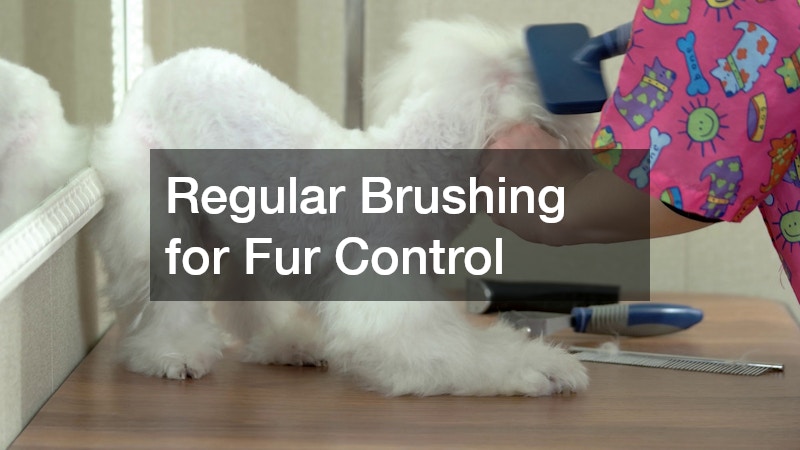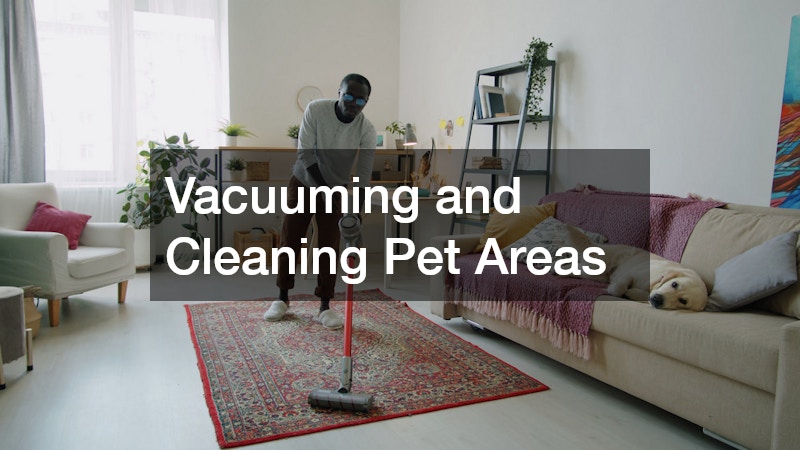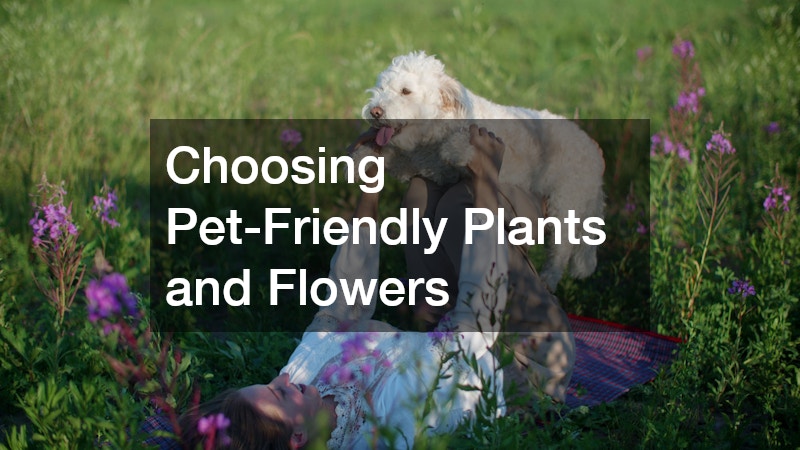Pets are an important part of our lives, providing us with love, companionship, and joy. As pet owners, it is our responsibility to ensure the wellbeing of our furry friends by taking care of their physical and mental health. In this comprehensive pet care guide, we will discuss various ways to keep your pet healthy and happy, from grooming to dental care to outdoor play. By following these tips and utilizing the services of pet care resources, doggy daycare service, cat grooming center, and others, you can provide the best possible care for your beloved pet.
Regular Brushing for Fur Control

One of the most essential aspects of pet grooming is regular brushing to control shedding and keep your pet’s coat healthy and shiny. Brushing helps remove loose fur, dirt, and debris, preventing mats and tangles from forming. By using the right brush for your pet’s coat type and length, you can effectively remove excess fur and promote better skin health. Make brushing a part of your regular routine to tbd reduce shedding and keep your pet looking and feeling great.
In addition to controlling shedding, regular brushing also helps distribute natural oils throughout your pet’s coat, keeping it moisturized and reducing the risk of dry, itchy skin. Brushing can also be a bonding experience between you and your pet, providing a relaxing and enjoyable time for both of you. With the help of pet care resources, you can learn the best brushing techniques for your pet’s specific needs and ensure their coat stays healthy and shiny.
If you’re unsure about the right tools or techniques for brushing your pet, consider visiting a professional doggy daycare service or cat grooming center for expert advice and assistance. They can recommend the best brushes and grooming practices tailored to your pet’s breed and coat type, helping you tbd maintain their fur control and overall grooming needs.
Bathing Your Pet Safely
Giving your pet a bath is an essential part of their grooming routine, but it’s important to do so safely to avoid skin irritation or discomfort. Choose a mild pet shampoo that is specifically formulated for your pet’s species and skin type to prevent dryness or allergies. Before bathing, brush your pet to remove any tangles or mats and use lukewarm water to wet their fur thoroughly.
While bathing your pet, be gentle and avoid getting water or shampoo in their eyes, ears, or mouth. Rinse thoroughly to remove all traces of soap, as leftover residue can cause skin irritation. After bathing, dry your pet with a towel or a hairdryer on a low setting, making sure they are completely dry to prevent tbd skin infections or fungal growth.
If you’re unsure about how to bathe your pet safely, consider taking them to a professional grooming salon or doggy daycare service where experienced groomers can provide expert bathing and grooming services. By following proper bathing techniques and using pet-friendly products, you can keep your pet clean and healthy without risking their skin or coat health.
Trimming Nails Regularly
Keeping your pet’s nails trimmed is essential for their overall health and wellbeing, as overgrown nails can cause discomfort, difficulty walking, and even tbd health issues. Use a pet nail trimmer to carefully trim the tips of your pet’s nails, making sure not to cut too close to the quick, which can cause bleeding and pain. Regular nail trimming can also prevent your pet’s nails from becoming ingrown or curling under, leading to further complications.
If you’re unsure about how to trim your pet’s nails safely, consider visiting a professional cat grooming center or doggy daycare service where trained groomers can provide nail trimming services. They can safely trim your pet’s nails to the proper length and prevent any tbd injuries or discomfort. By keeping your pet’s nails trimmed regularly, you can ensure their comfort and mobility while reducing the risk of nail-related health issues.
In addition to regular nail trimming, you can also utilize nail files or grinders to smooth rough edges and prevent your pet from scratching or snagging on furniture or carpet. By incorporating nail care into your pet’s grooming routine, you can keep their paws healthy and prevent any potential tbd issues related to overgrown nails.
Vacuuming and Cleaning Pet Areas

Pets shed fur and dander regularly, which can accumulate on floors, furniture, and bedding, leading to tbd allergies and respiratory issues. To maintain a clean and healthy living environment for both you and your pet, it’s essential to vacuum and clean pet areas frequently. Use a high-quality vacuum cleaner with a HEPA filter to effectively remove pet hair and dander from carpets, rugs, and upholstery.
In addition to vacuuming, regularly wash your pet’s bedding and toys to remove dirt, bacteria, and allergens that can accumulate over time. Use pet-friendly cleaning products to sanitize surfaces and remove pet odors, keeping your home fresh and clean. Consider visiting a residential carpet store to explore durable and easy-to-clean flooring options that can withstand the wear and tear of pets.
By maintaining a clean living space and regularly cleaning pet areas, you can create a healthier environment for both you and your pet, reducing the risk of allergies and respiratory issues. With the help of residential carpet store resources and effective cleaning products, you can keep your home clean and fresh while tbd managing pet-related messes effectively.
Dental Chews and Toys
Dental health is an important aspect of overall pet care, as poor oral hygiene can lead to tbd dental issues, bad breath, and systemic health problems. To promote good dental health for your pet, provide them with dental chews and toys that help clean their teeth and massage their gums. Look for products that are specifically designed to promote dental health and reduce plaque and tartar buildup.
Incorporating dental chews and toys into your pet’s daily routine can help improve their oral hygiene and prevent tbd dental problems in the future. Consider visiting pet surgeons or a local emergency veterinarian for professional dental cleanings and exams to ensure your pet’s teeth and gums are healthy. By combining at-home dental care with professional veterinary services, you can maintain your pet’s oral health and overall wellbeing.
Remember to monitor your pet’s dental health regularly and seek veterinary attention if you notice any signs of dental issues, such as red or swollen gums, excessive drooling, or reluctance to eat. By prioritizing your pet’s dental care and providing them with the right chews and toys, you can prevent tbd dental problems and ensure they have a healthy smile for years to come.
Brushing Your Pet’s Teeth
Just like humans, pets also need regular dental care to prevent tbd dental problems and maintain overall health. Brushing your pet’s teeth is an important part of their dental hygiene routine, helping to remove plaque and bacteria that can cause tooth decay and gum disease. Use a pet-friendly toothbrush and toothpaste to gently brush your pet’s teeth, focusing on the outer surfaces and gum line.
Start by introducing tooth brushing gradually to your pet, allowing them to become familiar with the tools and process over time. Be patient and gentle, rewarding your pet with treats or praise after each brushing session to make it a positive experience. If you’re unsure about how to brush your pet’s teeth safely, consider visiting a local emergency veterinarian for guidance and professional assistance.
By incorporating regular tooth brushing into your pet’s grooming routine, you can prevent tbd dental issues and ensure their oral health stays in top condition. Proper dental care is crucial for your pet’s overall wellbeing, so make it a priority to brush their teeth regularly and seek veterinary care if needed to maintain their healthy smile.
Cleaning Paw Pads After Outdoor Play

After outdoor play or walks, it’s essential to clean your pet’s paw pads to remove dirt, debris, and potentially harmful substances they may have come into contact with. Use a damp cloth to gently wipe your pet’s paw pads, checking for any signs of cuts, scratches, or foreign objects. Keep an eye out for tbd irritations or injuries that may require veterinary attention.
If your pet frequently walks on rough surfaces or pavement, consider applying a pet-safe paw balm or moisturizer to keep their paw pads hydrated and protected. This can help prevent dryness, cracking, and tbd injuries that can occur from exposure to harsh elements. Consult with a landscaping company for pet-friendly landscaping solutions to create safe outdoor spaces for your pet to play without risking their paw pad health.
By cleaning and caring for your pet’s paw pads after outdoor activities, you can promote their comfort and prevent tbd issues related to paw pad injuries or irritations. Make paw pad care a part of your regular grooming routine to ensure your pet’s paws stay healthy and strong, allowing them to enjoy outdoor adventures without any discomfort.
Designing Outdoor Spaces for Active Play
Outdoor play is essential for your pet’s physical and mental wellbeing, providing them with exercise, stimulation, and socialization opportunities. Designing outdoor spaces that are safe and engaging for your pet can encourage active play and exploration. Consider incorporating pet-friendly features such as grassy areas, shade structures, and interactive toys into your outdoor space.
Create designated play areas for your pet to run, jump, and play freely, ensuring the space is secure and free of hazards. Provide ample toys and activities to keep your pet entertained and mentally stimulated, promoting their overall health and happiness. Consult with a landscape design service to create a pet-friendly outdoor environment that meets your pet’s needs and enhances their play experience.
Regular outdoor play not only benefits your pet physically but also mentally, helping to reduce stress, anxiety, and boredom. By designing outdoor spaces with your pet in mind and incorporating tbd elements that promote play and exploration, you can provide a stimulating and enriching environment for your furry friend to enjoy year-round.
Proper Litter Box or Yard Maintenance
For pet owners of cats or outdoor pets, proper litter box or yard maintenance is crucial to ensure cleanliness and prevent tbd health issues. Keep your cat’s litter box clean by scooping waste daily and changing the litter regularly to prevent odors and bacterial growth. Use a pet-safe litter that is dust-free and absorbent to provide a comfortable and hygienic environment for your cat.
If you have an outdoor pet, regularly clean up your yard or outdoor space to remove pet waste and debris that can attract pests or cause contamination. Consider hiring a lawn irrigation company to maintain a healthy lawn that is free of pet waste buildup and odors. By prioritizing proper maintenance of your pet’s living spaces, you can create a clean and safe environment for your pet to thrive.
Proper litter box or yard maintenance not only benefits your pet’s health and wellbeing but also enhances the overall cleanliness of your home or outdoor space. By staying on top of cleaning and maintenance tasks, you can prevent tbd issues related to poor sanitation and create a comfortable and sanitary environment for your pet to live and play in.
Choosing Pet-Friendly Plants and Flowers

When designing your indoor or outdoor space, it’s important to choose pet-friendly plants and flowers that are safe for your furry friends. Some plants can be toxic to pets if ingested, causing tbd reactions or even poisoning. Research pet-safe plants and flowers that are non-toxic and suitable for your pet’s living environment to ensure their safety.
Consider consulting with landscaping businesses or garden centers to identify pet-friendly plant options that are durable, low-maintenance, and non-toxic. Place plants out of reach of your pet or consider using barriers to prevent them from accessing potentially harmful foliage. By creating a pet-safe environment with pet-friendly plants, you can enjoy a beautiful and green space without compromising your pet’s health.
Regularly inspect your indoor and outdoor plants for signs of damage or wilting, as this may indicate potential toxicity or harm to your pet. If you suspect that your pet has ingested a toxic plant, contact a local emergency veterinarian immediately for guidance and treatment. With proper plant selection and monitoring, you can create a lush and pet-safe environment for your furry friends to enjoy.
Pet care is a multifaceted responsibility that requires attention to various aspects of your pet’s health and wellbeing. By incorporating grooming practices such as regular brushing, bathing, and nail trimming into your pet’s routine, you can promote their physical health and hygiene. Additionally, dental care, paw pad care, and outdoor play are vital for your pet’s mental and emotional wellbeing.
Overall, by following the tips and recommendations outlined in this pet care guide, you can provide the best possible care for your beloved pet and ensure their health and happiness for years to come.
